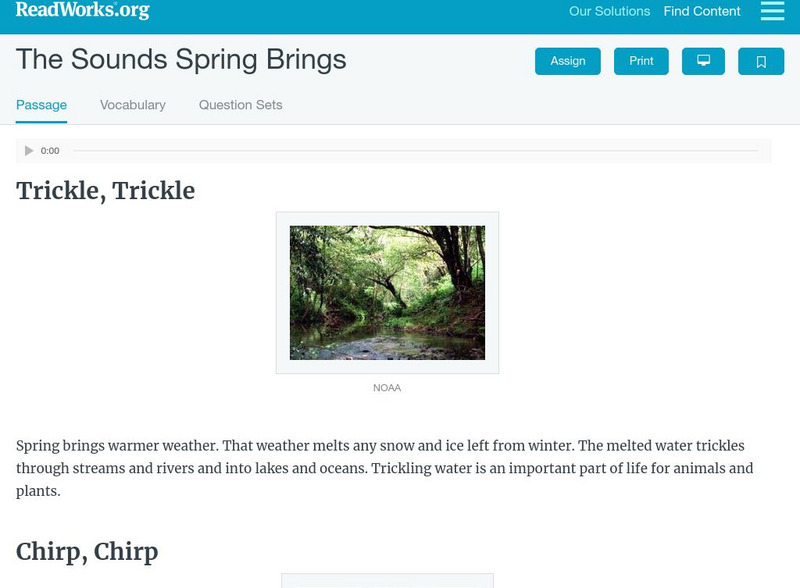Read Works
Read Works: The Sounds Spring Brings
[Free Registration/Login Required] This passage is a stand-alone curricular piece that reinforces essential reading skills and strategies and establishes Students read spring and its sounds and sensory imagery. A question sheet is...
E-learning for Kids
E Learning for Kids: Math: Olive Trees: Data & Chance
Ariel is taking a survey. Do you want to help her collect and describe data?
Polk Brothers Foundation Center for Urban Education at DePaul University
De Paul University: Center for Urban Education: Early Chicago Environment & People [Pdf]
"Early Chicago Environment & People" is a one page, nonfiction passage about the Native Americans who lived in what is now Chicago. It explains how they lived and how Chicago got its name. It is followed by constructed-response...
E-learning for Kids
E Learning for Kids: Science: North Sea: Netherlands: What Is It Made Of?
Finn is joining his father on their boat. Join them and help Finn sort materials based on their properties.
University of Regina (Canada)
University of Regina: Math Central: Lesson: Mr. Z's 5 Minute Game of Geometric Pandemonium
Students make a series of geometric drawings of points, obtuse angles, rays, polygons, and the like. Each child is given one but not allowed to show anyone else. The drawing is then taped to the back of the child in front of them. The...
University of Cambridge
University of Cambridge: Nrich: Tom's Number
Use the clues Tom gives you to figure out his number. The solution is right there on this one page website.
Other
Science4 Us: Materials
Students use a dichotomous key to sort materials into natural and man-made and sort further using the adjectives rough and smooth; this activity builds both science and language skills as students classify materials and build deeper...
Other
Math Stories: Finding a Pattern
At this one page site, you can work through step by step a sample problem that illustrates the problem-solving strategy for "identify a pattern." The answer is right there to help you check your thinking.
ClassFlow
Class Flow: Animal Classification
[Free Registration/Login Required] Students will classify organisms into groups and relate how they determined the groups with how and why scientists use classification. They will also demonstrate how animals are sorted into groups...


![De Paul University: Center for Urban Education: Early Chicago Environment & People [Pdf] Unit Plan De Paul University: Center for Urban Education: Early Chicago Environment & People [Pdf] Unit Plan](https://static.lp.lexp.cloud/images/attachment_defaults/resource/large/FPO-knovation.png)




